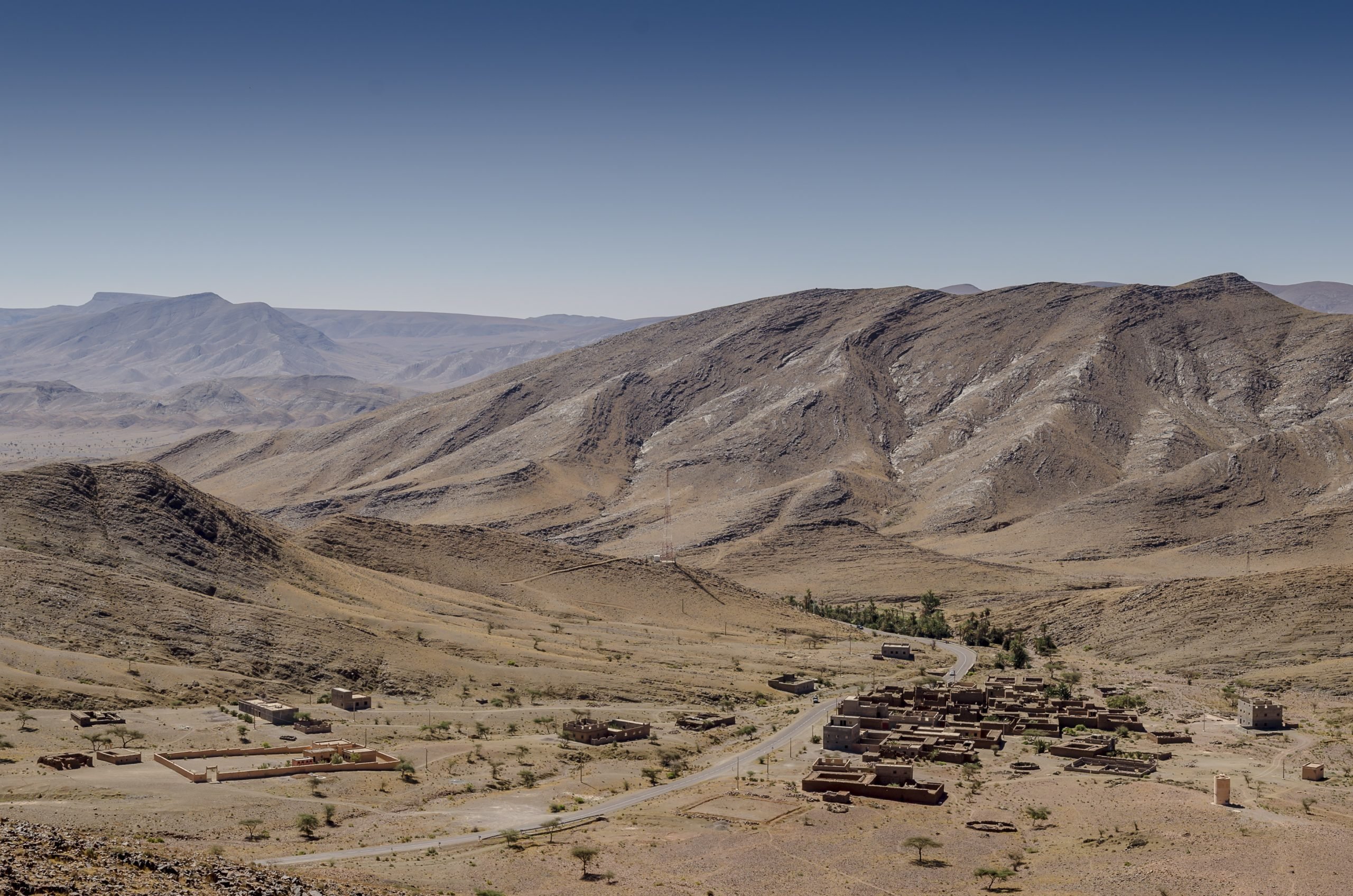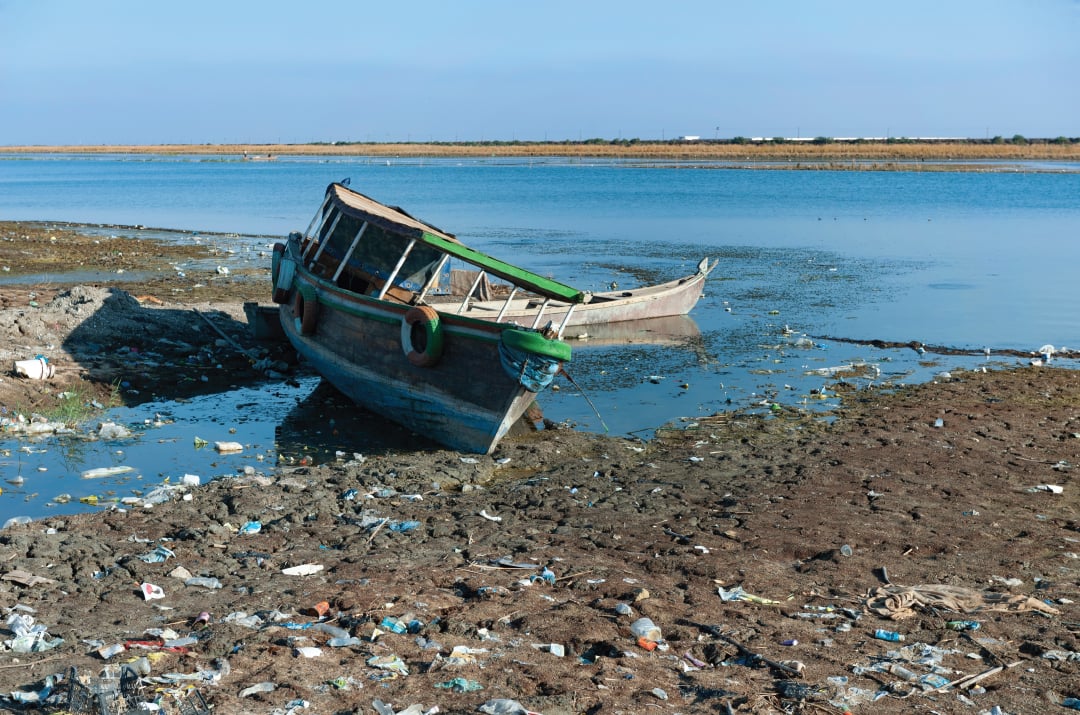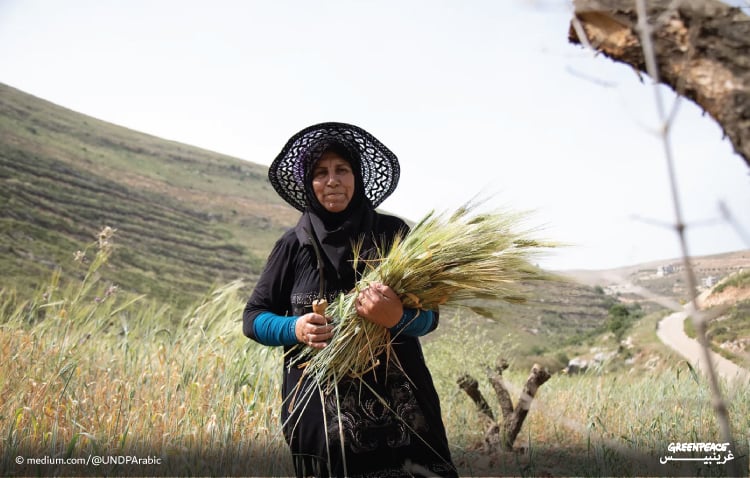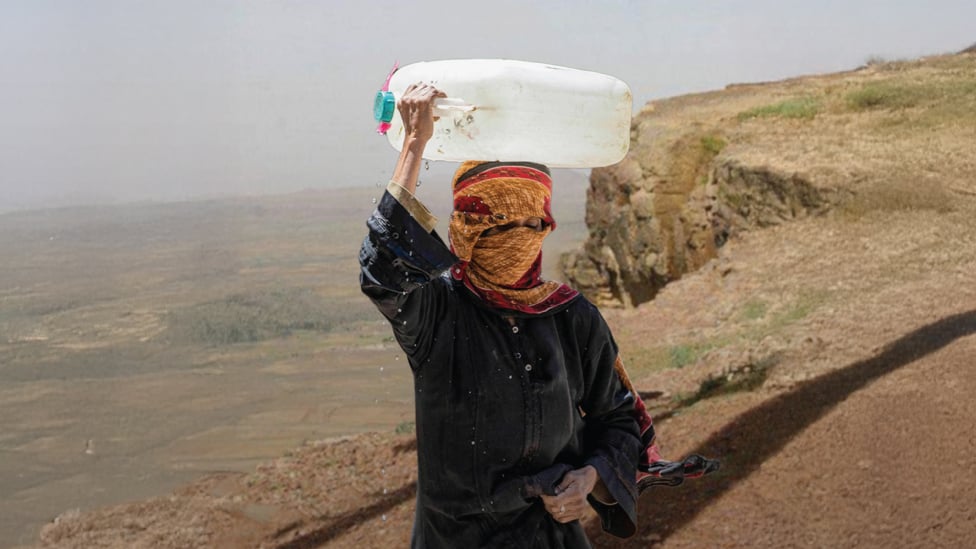
Before dawn breaks, Hayat (a pseudonym) begins her daily journey to fetch water, balancing on her head a traditional container known in Yemen as a “debbeh”, a jerrycan used to carry water from wells or distribution points. For thirty years, Hayat has walked a path of hardship that tells a story of extraordinary endurance. The distance her footsteps have covered equals one and a half times the Earth’s circumference, and the water she has carried weighs roughly 650 tons. |
For many long years, Hayat, like other women in the village of Sha’bat al-Qaranit, located in al-Silw District in Yemen, has been fetching water from the Ghayl al-Hidyah spring, about 200 meters away from the village, according to local residents. Yet the rough and winding terrain turns this short distance into nearly a kilometer each way. Hayat makes this trip three times a day, carrying 20 kilograms of water on her head each time, to meet her family’s needs and carry out household chores.
Hayat is not alone on this daily journey. Her story embodies a reality shared by most of the women in that village, a hardship repeated each day in its grueling details: long hours of waiting, struggles to secure water, health problems caused by the heavy loads, and early school dropouts.
The Water Crisis in Sha’bat al-Qaranit
The Ghayl al-Hidyah spring, the village’s main water source, was once clean and continuously flowing; a true perennial spring. But over the past two decades, its water has significantly declined due to drought and reduced rainfall. This has deepened the water crisis in the naturally mountainous region, surrounded by rugged roads. There are a few small valleys (wadis) in the area, but they lie far from residential clusters.
Some residents have dug shallow, makeshift wells by hand, no more than ten meters deep, that rely mainly on seasonal rainwater. However, these wells are neither covered nor protected, leaving the stagnant water exposed to contamination and disease, posing a serious risk to public health. Moreover, since these wells are privately owned, most women cannot access them.
In 2009, the al-Silw Water Project was launched in an effort to provide a sustainable water source, offering the community renewed hope of relief from their suffering. But the project collapsed after just two years due to corruption and mismanagement, leaving residents once again to face thirst on their own. Recently, around five percent of households have managed to build concrete tanks to collect rainwater, but the majority cannot afford to do so due to limited resources.
The story does not end there. Today, the women of the village have inherited Hayat’s burden, carrying the same 20-kilogram jerrycan, passed down from one generation to the next as a heavy legacy, a witness to an unending struggle…
While this story captures the suffering of the women of one Yemeni village, it also reflects a broader, deepening crisis that affects the entire region.
Worsening Water Scarcity Due to Climate Change and Population Growth
The water scarcity crisis remains one of the most pressing challenges facing the Middle East and North Africa. According to an August 2023 report by the World Resources Institute (WRI), 25 countries, home to a quarter of the world’s population, experience “extremely high water stress” each year, meaning they use a large share of their renewable freshwater resources to meet agricultural, industrial, and domestic needs.
The report found that the most affected areas are in the Middle East and North Africa, where about 83% of the population faces severe water shortages, and where per capita access to drinking water is far below the global average. Among the 25 countries facing annual water stress are 15 Arab states, including: Bahrain, Qatar, Kuwait, Lebanon, Oman, the United Arab Emirates, Tunisia, Yemen, Iraq, Egypt, Libya, Jordan, Saudi Arabia, and Syria.
The crisis is worsening due to several factors, including rising temperatures, the deterioration of aging water networks, pollution, poor management of water resources, and rapid population growth. Added to these is the intensive use of fossil fuels as the primary energy source, which raises temperatures further, accelerates the evaporation of surface water, and increases pressure on groundwater, thereby deepening the drought crisis.
Water Scarcity and Its Consequences
Water scarcity has become an escalating crisis that directly affects water flows and intensifies the overexploitation of groundwater aquifers. This has led to a decline in the daily per capita share of water and placed communities before growing challenges that go beyond environmental concerns to encompass profound social and economic dimensions. This crisis is driving many young people into unemployment or forcing them to migrate to major cities in search of alternative water sources and better job opportunities.
Under such conditions, water scarcity is no longer merely an environmental issue; rather, it has become a comprehensive threat to water and food security, as well as to social and economic stability across the region.
Proposed Solutions to Address the Water Crisis in the Region
- Improving infrastructure and curbing unregulated drilling: Enhancing water infrastructure, such as repairing old pipelines, is a fundamental step toward reducing consumption. Outdated systems cause significant losses before water even reaches consumers. Regular maintenance is therefore essential to preserve water resources. Connecting rural and remote areas to national water networks, or finding alternative solutions with the support of environmental associations, is also vital. In parallel, authorities must strengthen oversight of unregulated spring tapping and well drilling.
- Maintaining water facilities: The maintenance of dams and irrigation canals used to collect and distribute water must be a top priority, along with implementing efficient techniques to limit water evaporation.
- Supporting efficient irrigation systems: Promoting efficient irrigation systems is another key part of the solution. These systems help address mismanagement and the wasteful use of water resources, ensuring optimal use of every drop. They also allow each country to prioritize the use of its water resources for agriculture to meet national needs.
- Using rainwater harvesting techniques: Water sustainability can be enhanced by adopting rainwater harvesting technologies, such as modern storage tanks, alongside traditional methods that have long been used by local communities, such as khettaras (draining galleries) in Morocco and majel (underground cisterns) in Tunisia. These techniques help meet household and agricultural needs while easing pressure on conventional water sources.
- The role of media and civil society: Solutions also lie in the collective efforts of youth, civil society organizations, associations, official institutions, and the media to change social behaviors and raise awareness of the importance of water as a vital resource and a legacy for future generations, ensuring its sustainability.
- Continuing to put pressure on historical polluters: It is equally crucial to reduce the effects of climate change, which exacerbates environmental crises in the region, and to limit the use of fossil fuels, the main driver of global temperature rise. This warming increases surface water evaporation and reduces renewable water resources, intensifying water scarcity. Addressing this requires continued pressure on historical polluters to take responsibility for the climate crisis. Industrial and energy projects that deplete water resources must also be reassessed, particularly those whose revenues are largely directed toward export, such as future green hydrogen projects in North Africa.
Finally, it is time to move from discussions and policymaking to concrete action, by adopting clear proposals and implementing tangible projects on the ground.
Note:
This story is real, and the name “Hayat” was used at the request of a family member to protect the woman’s privacy.
Special thanks to Mr. Jameel Abdul Latif from Yemen for his cooperation and for providing the information that helped document and write this story.
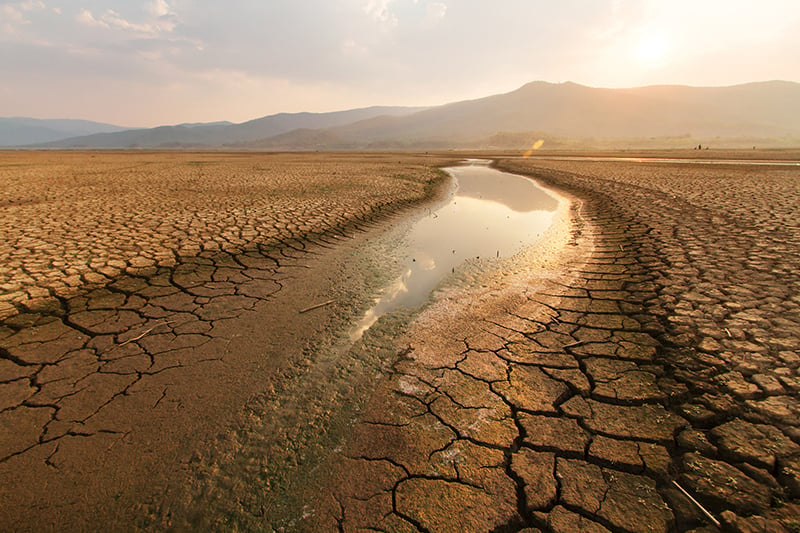
Since climate change is one of the most serious threats facing the Middle East and North Africa, and as part of our awareness project to combat and adapt to its impacts, we want to hear from you, and from citizens across the region who are witnessing the changes around them caused by global warming.
Join Us
